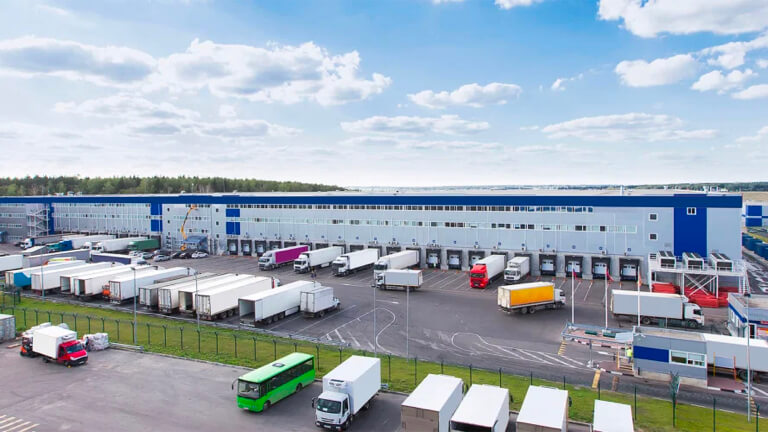A 5-Step Guide to Sustainable Business Travel
Meeting face-to-face helps organizations build trust and grow relationships. Unfortunately, carbon emissions from business travel also contribute significantly to climate change. As companies prioritize net zero initiatives, executives are trying to reap the undeniable benefits of collaborating in person without sacrificing our planet’s viability.
Taking a fresh look at your company’s business travel policies and tools is a great place to start. The good news is you won’t have to ground your employees. Instead, you can pull from tools you already have while introducing work-from-anywhere capability, redefining what “essential” travel means, promoting low-emissions transportation options, and working with partners outside your organization. You’ll also need to account for your business travel carbon emissions if you hope to reduce them.
In this guide, we’ll show you how you can balance your need for business travel with your sustainability commitments and share how to get started on tracking and reducing your entire carbon footprint.

Step 1: Think digital first.
The pandemic opened our eyes to just how much we can accomplish virtually. Even in face time-heavy industries like real estate and healthcare, companies propelled business forward using online channels. Today, companies across every sector aren’t looking back: In fact, nine out of 10 companies are adopting hybrid working arrangements. And with 77% of employees splitting time between the office and home (or working remotely entirely), it’s no surprise that companies will likely not ever go back to exactly how things were.
So how should organizations approach business travel in this work-from-anywhere world? The first step is leaning on digital channels as the primary driver of productivity.

“We learned a ton during the pandemic. With minimal travel, we performed exceptionally well. We had more C-level meetings, faster turnaround times, better access to customers. And we don’t want to lose that. It’s digital first, and that should be our mentality moving forward.”

“We call it the digital HQ because in this all-digital, work-from-anywhere world, your digital headquarters is more important than your physical headquarters. Every company needs a digital HQ to connect its employees, customers, and partners and thrive in a work-from-anywhere world.”

Companies expect business travel to decrease 20% between 2019 and 2023.
Sustainability Efforts Organizations Are Making to Reduce Their Environmental Impact









Step 2: Prioritize and promote low-emissions travel.

On average, taking the train emits one-sixth of the greenhouse gas emissions as taking a short-haul flight.
Emissions from Different Modes of Transport







"The majority of Salesforce business travel emissions come from air travel, which is why we are tackling this sector first. We are fortunate that the routes we travel for business are in destinations where rail is a viable alternative, so we have prioritized the development of a rail policy and programmed mindful travel tips in our online booking tool to strongly encourage employees to shift from air to rail on specific routes when available.”
Enable responsible choices with technology.
Your employees will help you reduce travel emissions so long as you provide a seamless process. Here are a few ways to optimize your online booking tool to reduce emissions.
- Have it sort transportation options by emissions output instead of price or carrier.
- Change recommendations to default to carbon-friendlier choices such as electric vehicles.
- Turn on mode-switching, so employees can more easily compare traditional transportation with lower-carbon options, such as traveling by rail instead of air.
- Have it flag short trips as potential opportunities to embrace a digital-first culture and meet virtually.
- Ensure users have a way to be informed of their carbon usage and choose options that adhere to your company’s emissions standards.

Salesforce Business Travel Reduction Measures

Salesforce saw a 50%-plus reduction in emissions relative to business as usual.

Step 3: Measure emissions and track progress to stay accountable.

“Being able to visualize data and show it to key decision makers — that's what enables change to happen. Having visibility into our carbon emissions has been a game changer.”

Not all platforms can handle scope 3 emissions data, even though scope 3 emissions account for more than 70% of many businesses’ total emissions.

Deloitte Germany makes data-driven decisions to reduce business travel carbon emissions.
Deloitte Germany is using the comprehensive insights that Net Zero Cloud reveals to identify the highest impact areas for improvement. Traditionally, the organization has reported its carbon balance sheet annually, with team members spending four to six weeks pulling together and calculating the year’s data.
With Net Zero Cloud, however, Deloitte Germany can now share emissions data every month and take immediate action when it identifies a problem area. Net Zero Cloud also presents guided improvement actions for each of Deloitte Germany’s engagement managers. And, the company’s carbon footprint is managed and accounted for within the same solution.
Since piloting Net Zero Cloud in 2021, and by monitoring the firm’s travel rules, Deloitte Germany has massively reduced the number of flight emissions by consultants and partners. Using Net Zero Cloud, Deloitte Germany is now able to map its GHG emissions on the individual client engagement level and provide the data to 1,500-plus stakeholders and project team members.
“The impact we have on our internal numbers is little when compared to our impact on the client side,” said Maic Stohr, who drives business development around the Salesforce space for Deloitte Germany, focusing on stakeholder experience. “We do sustainability audits and consulting for clients, and in our organization, sustainability is one of the six strategic offerings we want to deploy at scale in the next five years.”

Step 4: Lead the way for partners.
Lead by example with your partners, vendors, and suppliers by setting boundaries as to when you expect in-person versus virtual communication. A lot of companies — especially consultancies — will follow their clients’ lead when it comes to travel, so be sure to let them know early on under which circumstances — if any — they should appear in person.
When negotiating, set clear business travel standards. In addition to laying out the circumstances where travel will be permitted, specify how many people should travel and by which means. For example, if taking the train between two metropolitan cities is feasible, you can make that the preferred (or even required) mode of transportation.
Is your supply chain sustainable?

Step 5: Look beyond your organization.
It’s probable that your company will still produce travel-related emissions even after you’ve done everything we’ve suggested here. Don’t let that sidetrack you.
Seek out external initiatives like the Sustainable Aviation Buyers Alliance, where you can help reduce travel-related emissions on a broader scale. Collaboration and advocacy can drive systemic change and lead to the broader availability of carbon neutral transportation options — even with air travel.
With sustainable aviation fuels (SAF), carriers can reduce the carbon footprint of traditional aviation fuel by up to 80% while leveraging existing infrastructure with a drop-in replacement for more carbon-intensive fuels. The challenge is that SAF is expensive to produce, which is why it comprises less than 0.1% of current consumption. Enter Clean Skies for Tomorrow (CST) Coalition, a partnership between climate experts, CEOs, and government leaders to help the aviation industry achieve net zero emissions by 2050.
Collaboration drives change.
Offsetting your remaining carbon emissions by buying carbon credits is the last step toward achieving net zero carbon emissions. Keep in mind that carbon credits aren’t created equal in terms of impact. Avoidance offsets, for instance, include limiting tree harvesting or stopping untouched land from being converted into farmland. Removal credits include investing in healthy forests and oceans, both of which are natural carbon sinks that efficiently absorb CO2.
To achieve a 1.5°C goal, we need to purchase both avoidance and removal credits now. But ultimately, avoidance should come from your actions, not your budget. Removal credits are designed to extract CO2 from the atmosphere, whereas avoidance credits prevent carbon from being emitted in the first place. So as your company puts enough policies in place to avoid roughly 90% of your emissions, you can gradually move your credit dollars away from carbon avoidance and toward carbon removal.
Together, we can go net zero now.
The ways we live and work have changed forever. The good news is those changes present an exciting opportunity for organizations to prioritize sustainability.
From using the right digital tools that enable working from anywhere to optimizing your travel platform for low-emissions options, you can take steps — today — to reduce your carbon footprint inside your organization. Externally, use your influence to encourage partners in your value chain to cut their own CO2 output, and take it a step further by exploring investments in the Sustainable Aviation Buyers Alliance or similar organizations. Most important, stay accountable for your progress. Set goals, measure results, and iterate on your strategy whenever and wherever necessary.
Net Zero Cloud is a sustainability management platform that allows companies to track, analyze, and report reliable emissions data in real time, enabling them to meet their net zero goals. A business travel dashboard provides real-time insights into which employees are traveling and by what mode. It shows which departments or geographies are responsible for the most carbon emissions and offers actionable data and insights that guide decisions and policies. Net Zero Cloud embeds conversion factors that conform to global standards and uses those factors to convert travel data into emissions data, saving you time and reducing calculation errors. The platform can also provide visibility into emissions data between you and your suppliers, helping your entire ecosystem achieve net zero.

Ready to get started?
More resources

Reducing Value Chain Emissions by Enabling Supplier Action

The Business Guide to Carbon Accounting







